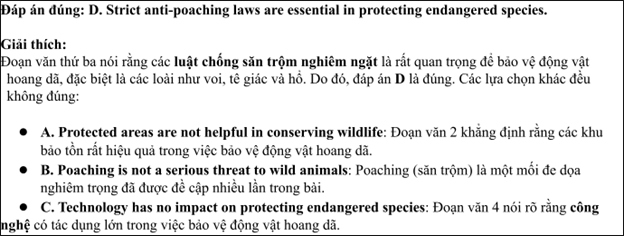There are currently over 8 million species of animals and plants in the world, but many of them are in danger of extinction due to human activities. Habitat destruction, poaching, and climate change are some of the main factors causing this crisis. Efforts to protect wildlife have increased in recent years, and many conservation organizations are working to ensure that these species are preserved for future generations. Some of the largest initiatives focus on creating wildlife reserves, strengthening anti-poaching laws, and raising public awareness.
One effective method of protecting wild animals is the establishment of protected areas, such as national parks and wildlife sanctuaries. These areas provide safe environments for animals to live and breed without the threat of human interference. For example, the Yellowstone National Park in the United States has successfully protected species like the gray wolf and bison. These protected areas also allow scientists to study wildlife in their natural habitats, which is crucial for understanding their behaviors and survival needs.
Another important approach is enforcing strict anti-poaching laws. Poaching for illegal trade in animal parts is one of the biggest threats to many endangered species, especially elephants, rhinos, and tigers. Countries like Kenya and India have adopted stricter wildlife protection laws, and they are actively working with international organizations to combat poaching. Increasing penalties for wildlife crimes and improving surveillance in high-risk areas are also essential in reducing poaching activities.
Technology plays a crucial role in modern wildlife conservation efforts. Drones and satellite tracking are being used to monitor animal movements and detect illegal activities such as poaching. Moreover, social media platforms and websites are used to raise awareness and encourage people to support wildlife protection campaigns. Programs like the “Wildlife Crime” app allow individuals to report suspicious activities, which helps authorities take swift action to protect endangered species.
(Adapted from dailynews)
Câu 23: Which of the following is NOT mentioned as a major threat to wildlife in the passage?
A. Habitat destruction B. Poaching C. Climate change D. Overhunting
Câu 24: The word “extinction” in paragraph 1 is OPPOSITE in meaning to
A. Survival B. Loss C. Reduction D. Abundance
Câu 25: The word “these” in paragraph 2 refers to
A. Species B. Habitats C. Parks and sanctuaries D. Animals
Câu 26: The word "interference" in paragraph 2 could be best replaced by
A. Protection B. Involvement C. Disruption D. Support
Câu 27: Which of the following best paraphrases the underlined sentence "Efforts to protect wildlife have increased in recent years" in paragraph 1?
A. There have been fewer efforts to protect wildlife in recent years.
B. The protection of wildlife has been ignored for many years.
C. Wildlife protection efforts have grown in importance in recent years.
D. Protection efforts for wildlife have been less effective recently.
Câu 28: Which of the following is TRUE according to the passage?
A. Protected areas are not helpful in conserving wildlife.
B. Poaching is not a serious threat to wild animals.
C. Technology has no impact on protecting endangered species.
D. Strict anti-poaching laws are essential in protecting endangered species.
Câu 29: In which paragraph does the writer mention a current method for wildlife protection?
A. Paragraph 1 B. Paragraph 2 C. Paragraph 3 D. Paragraph 4
Câu 30: In which paragraph does the writer discuss the use of technology in wildlife conservation?
A. Paragraph 1 B. Paragraph 2 C. Paragraph 3 D. Paragraph 4
Second Semester Midterm Exam GRADE 12 Test 15








